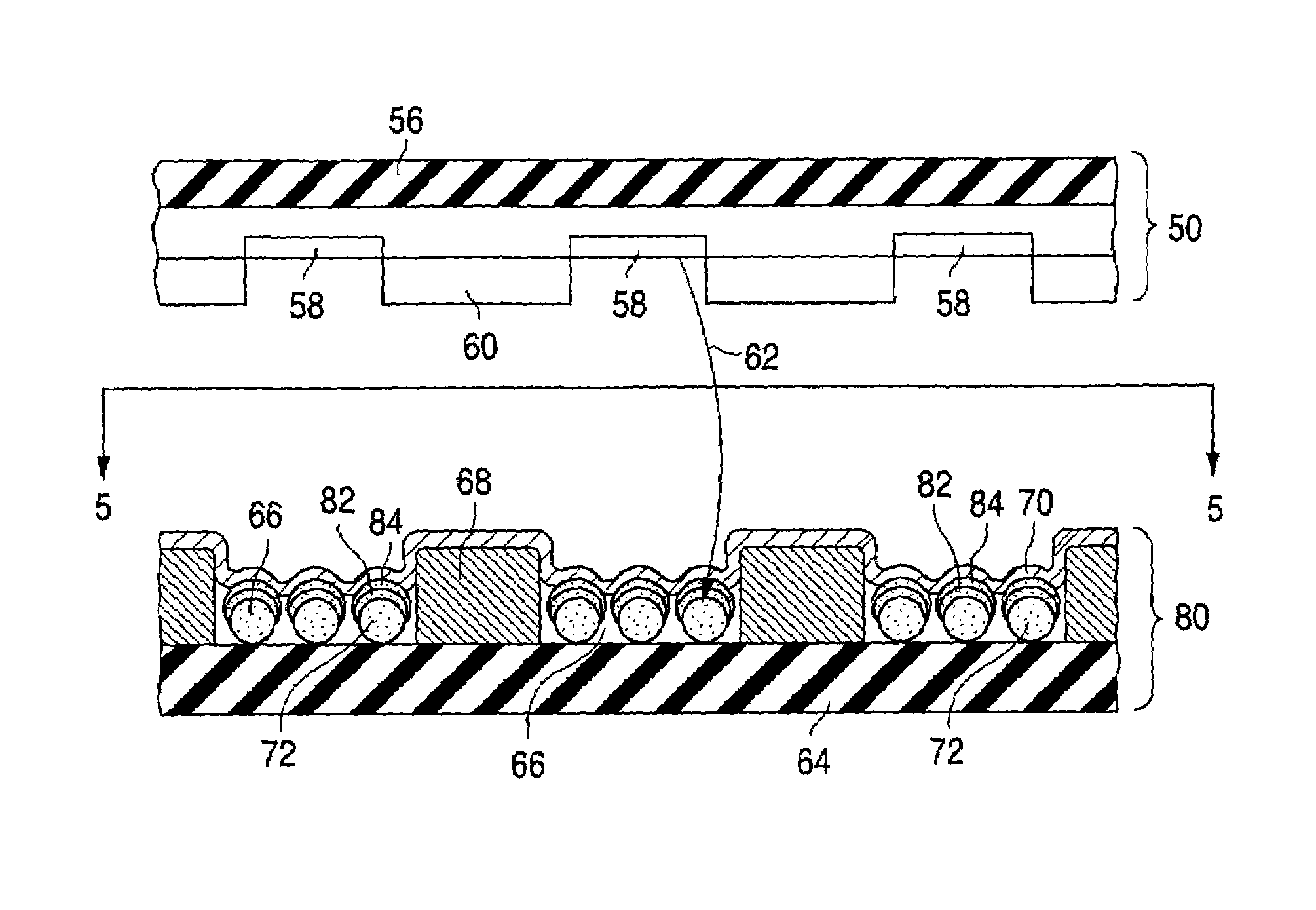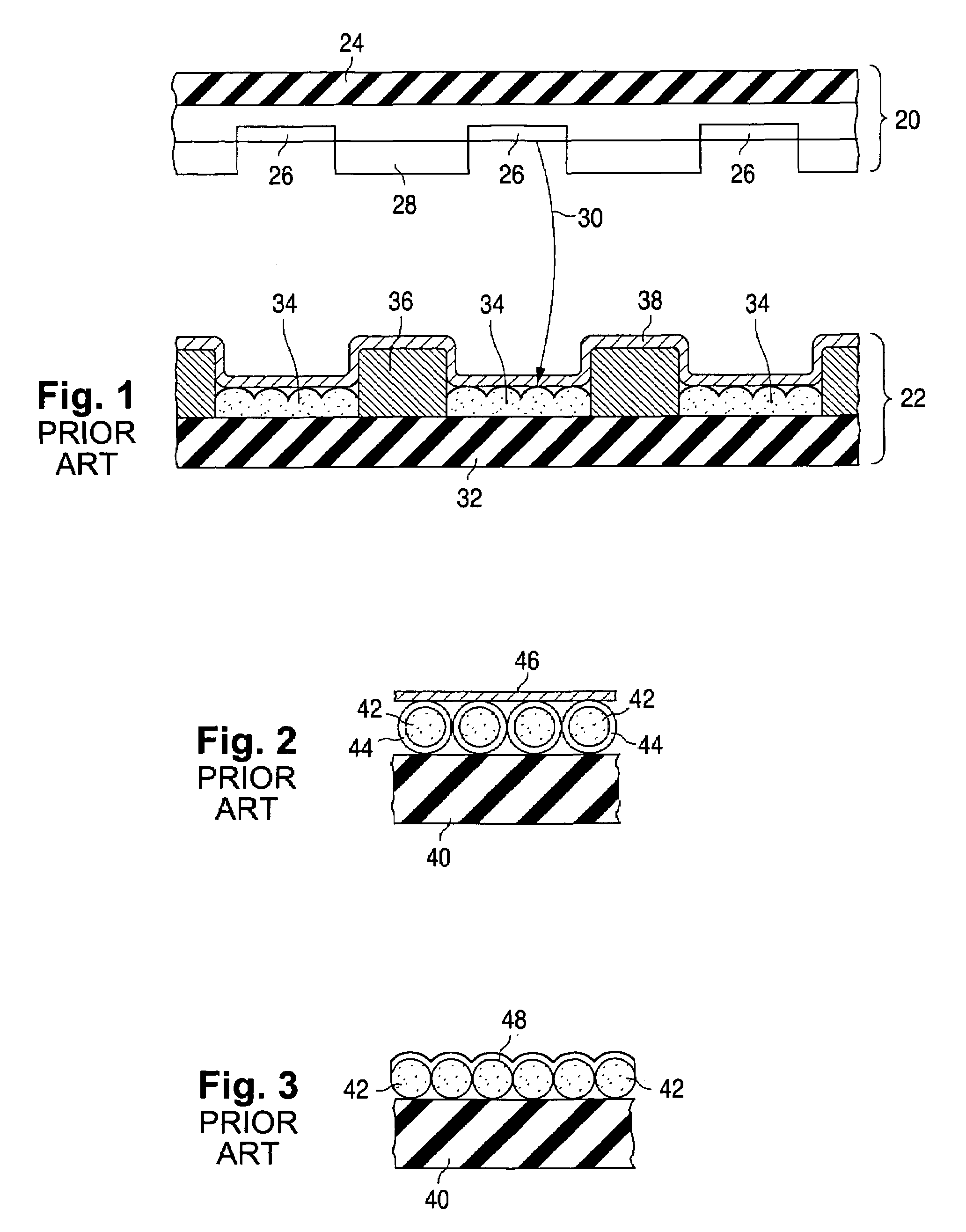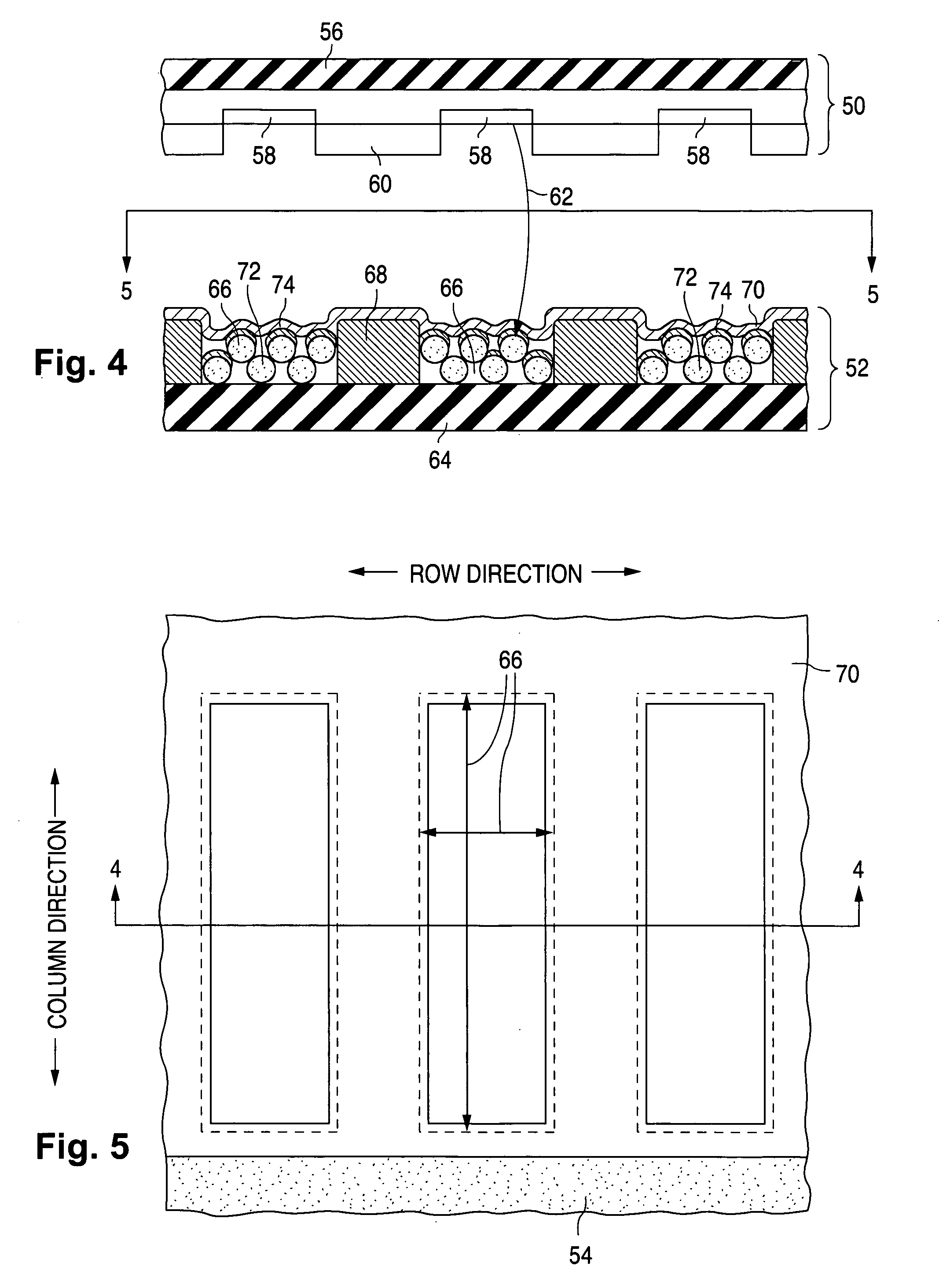Light-emitting device having light-emissive particles partially coated with intensity-enhancement material
- Summary
- Abstract
- Description
- Claims
- Application Information
AI Technical Summary
Benefits of technology
Problems solved by technology
Method used
Image
Examples
Embodiment Construction
General Considerations
[0053]Various configurations are described below for flat-panel CRT displays having light-emitting devices configured according to the invention. Each flat-panel CRT display is typically suitable for a flat-panel television or a flat-panel video monitor for a personal computer, a laptop computer, a workstation, or a hand-held device such as a personal digital assistant.
[0054]Each of the present flat-panel CRT displays is typically a color display but can be a monochrome, e.g., black-and-green or black-and-white, display. Each light-emissive region and the corresponding oppositely positioned electron-emissive region form a pixel in a monochrome display, and a sub-pixel in a color display. A color pixel typically consists of three sub-pixels, one for red, another for green, and the third for blue.
[0055]In the following description, the term “electrically insulating” or “dielectric” generally applies to materials having a resistivity greater than 1010 ohm-cm. The ...
PUM
 Login to View More
Login to View More Abstract
Description
Claims
Application Information
 Login to View More
Login to View More - R&D
- Intellectual Property
- Life Sciences
- Materials
- Tech Scout
- Unparalleled Data Quality
- Higher Quality Content
- 60% Fewer Hallucinations
Browse by: Latest US Patents, China's latest patents, Technical Efficacy Thesaurus, Application Domain, Technology Topic, Popular Technical Reports.
© 2025 PatSnap. All rights reserved.Legal|Privacy policy|Modern Slavery Act Transparency Statement|Sitemap|About US| Contact US: help@patsnap.com



